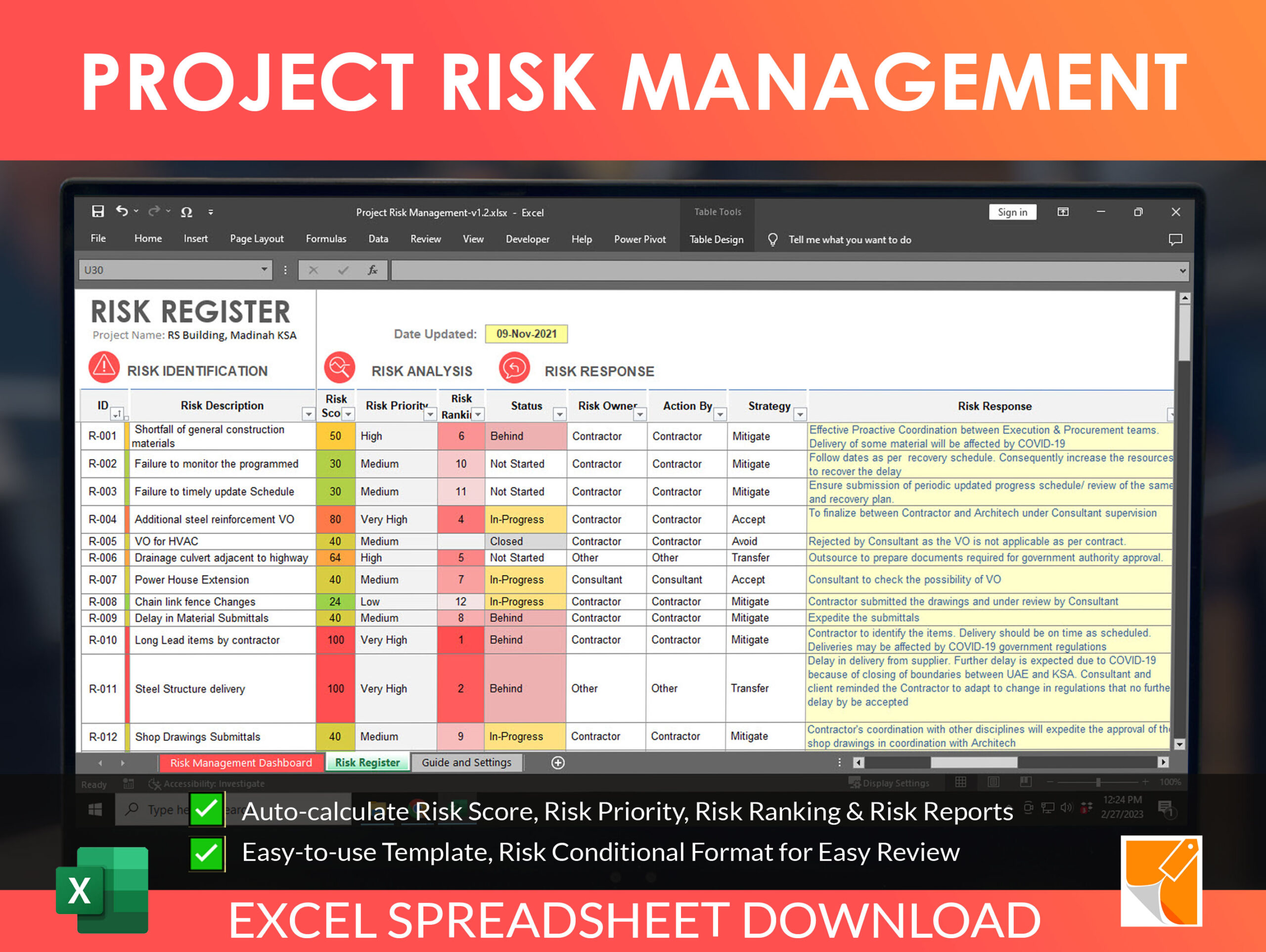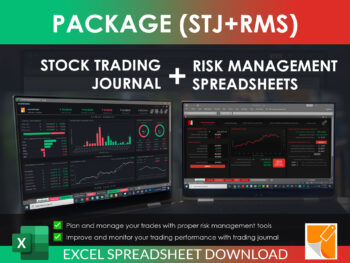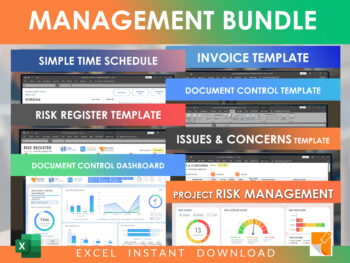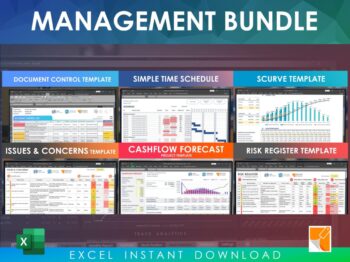When it comes to construction projects, there are countless factors that can impact the timeline and budget of a project. From weather delays to supply chain disruptions, unexpected events can throw a wrench in even the most well-planned project. This is where proactive project risk management comes into play. By identifying potential risks early on, construction teams can take steps to mitigate these risks before they become major issues. In this post, we’ll explore the benefits of taking a proactive approach to project risk management and discuss different techniques and strategies for managing risk in construction projects.
What is Project Risk Management?
Project risk management is the process of identifying, assessing, and managing risks that may impact a project’s timeline, budget, or outcome. By taking a proactive approach to risk management, construction teams can identify potential issues before they occur and take steps to mitigate or avoid these risks. Effective project risk management can help ensure that projects are completed on time, within budget, and to the satisfaction of all stakeholders.
Benefits of Proactive Project Risk Management
Taking a proactive approach to project risk management offers a number of benefits, including:
Cost Savings
Identifying and mitigating potential risks early in the project can help prevent costly delays and rework down the line. By investing time and resources upfront in risk management, construction teams can save money in the long run.
Improved Project Planning
Effective risk management requires careful project planning and analysis. By incorporating risk management into the project planning process, construction teams can create more comprehensive project plans that take potential risks into account.
Better Decision Making
When risks are identified and analyzed early on, construction teams can make better-informed decisions about how to proceed with a project. By having a clear understanding of potential risks and their potential impact, teams can make decisions that minimize risk and maximize project success.
Improved Communication
Effective risk management requires ongoing communication between all stakeholders. By proactively identifying and managing risks, construction teams can improve communication and collaboration, leading to better project outcomes.
Techniques and Strategies for Proactive Project Risk Management
Effective project risk management requires a variety of techniques and strategies. Some key techniques and strategies include:
Risk Register
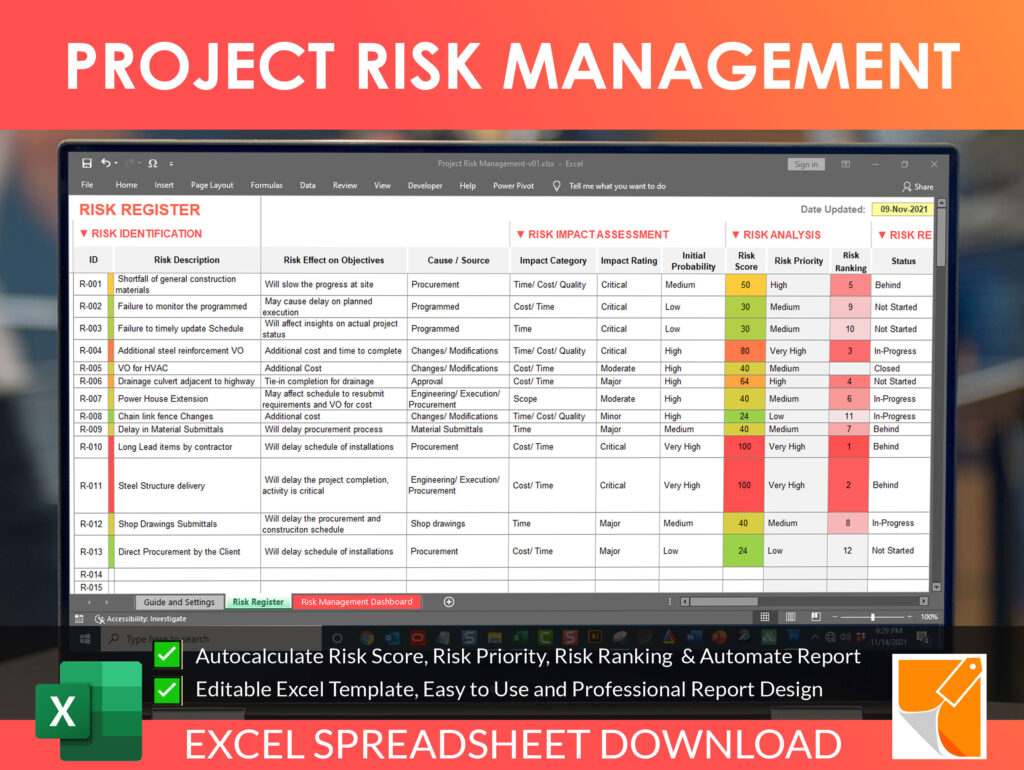
A risk register is a document that contains information about identified risks, including their likelihood, potential impact, and mitigation strategies. By maintaining a risk register, construction teams can keep track of potential risks and ensure that they are being managed effectively.
Risk Assessment
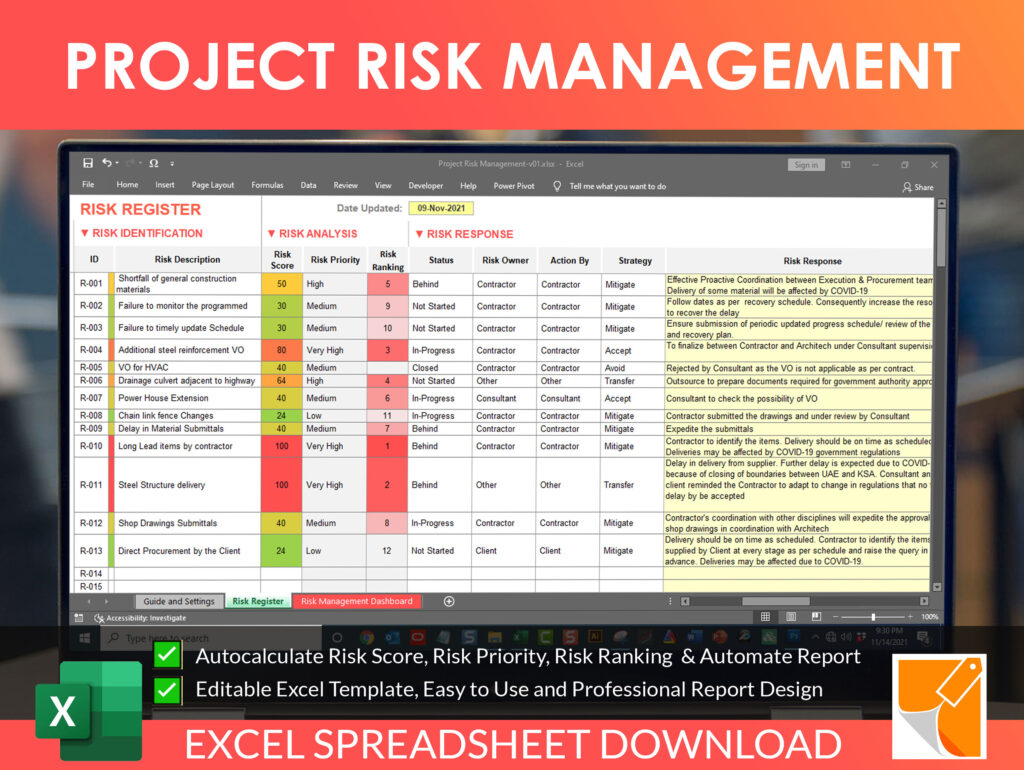
Risk assessment involves identifying potential risks and analyzing their likelihood and potential impact. By conducting regular risk assessments, construction teams can stay up-to-date on potential risks and take steps to mitigate or avoid these risks as needed.
Risk Analysis
Risk analysis involves analyzing the likelihood and potential impact of identified risks. This process can help construction teams prioritize risks and develop effective risk mitigation strategies.
Risk Matrix
A risk matrix is a tool that helps construction teams prioritize risks based on their likelihood and potential impact. By using a risk matrix, teams can focus their risk management efforts on the most significant risks.
Contingency Planning
Contingency planning involves developing plans for how to respond to potential risks. By developing contingency plans, construction teams can be better prepared to deal with unexpected events and minimize their impact on the project.
Project Management Template for Risk Management
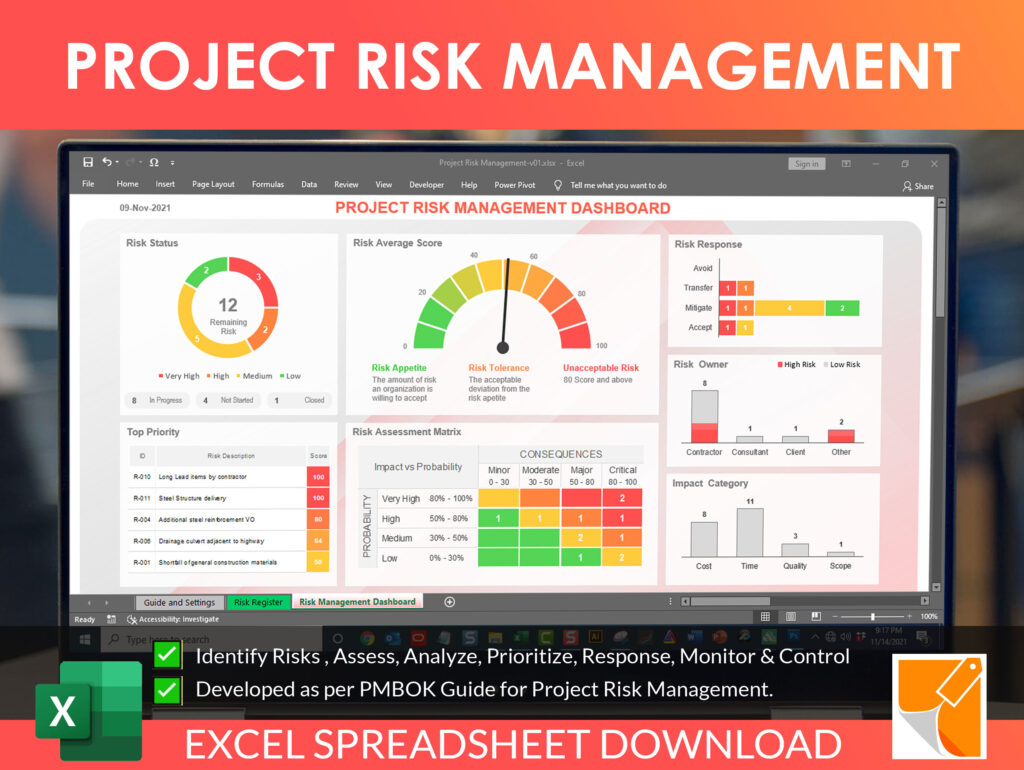
Effective project risk management often requires the use of specialized excel spreadsheets or software. Project management templates like Project Risk Management can help construction teams streamline risk management processes and improve communication and collaboration. Additionally, there are other project management templates that can be useful, such as a document control dashboard to identify risk in delayed project documents, and time scheduling template to determine delayed activities and their impact on project completion. These templates can aid construction teams in developing and implementing effective risk management strategies. By utilizing these tools, construction teams can improve project planning, and decision-making, and ultimately achieve greater project success. RocketSheets offers a variety of project management templates that can help construction teams achieve their goals.
Conclusion
Effective project risk management is essential for the success of construction projects. By taking a proactive approach to risk management, construction teams can identify potential issues early on and take steps to mitigate or avoid these risks. This can help save time and money in the long run, improve project planning and decision-making, and improve communication and collaboration between all stakeholders.
There are a variety of techniques and strategies that construction teams can use for effective project risk management, including risk assessment, risk analysis, risk registers, risk matrices, and contingency planning. By using specialized project management software like RocketSheets, construction teams can streamline risk management processes and improve communication and collaboration.
In conclusion, proactive project risk management should be an essential part of any construction project. By prioritizing risk management and investing time and resources upfront, construction teams can ensure that projects are completed on time, within budget, and to the satisfaction of all stakeholders.

